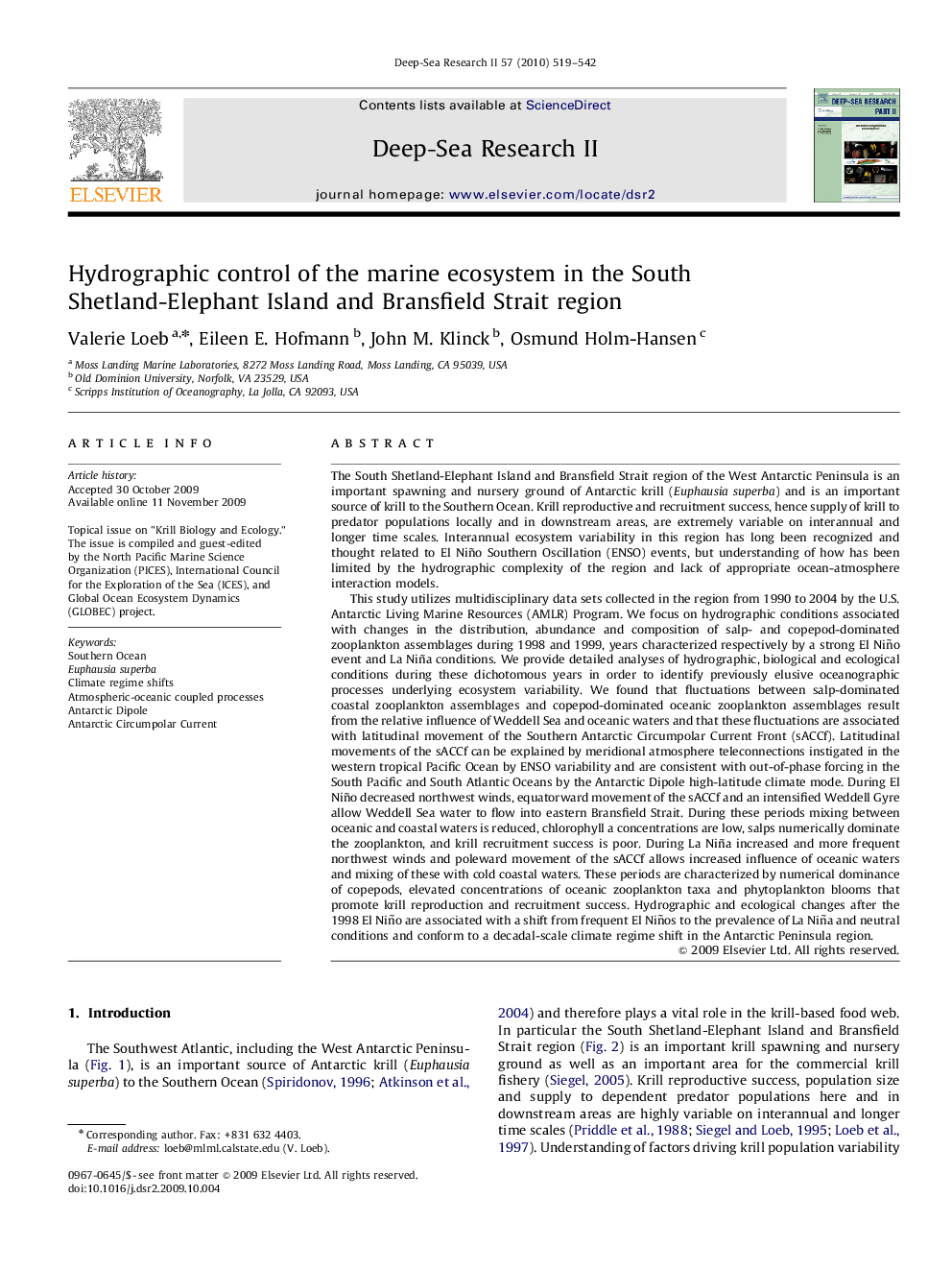| Article ID | Journal | Published Year | Pages | File Type |
|---|---|---|---|---|
| 4537041 | Deep Sea Research Part II: Topical Studies in Oceanography | 2010 | 24 Pages |
The South Shetland-Elephant Island and Bransfield Strait region of the West Antarctic Peninsula is an important spawning and nursery ground of Antarctic krill (Euphausia superba) and is an important source of krill to the Southern Ocean. Krill reproductive and recruitment success, hence supply of krill to predator populations locally and in downstream areas, are extremely variable on interannual and longer time scales. Interannual ecosystem variability in this region has long been recognized and thought related to El Niño Southern Oscillation (ENSO) events, but understanding of how has been limited by the hydrographic complexity of the region and lack of appropriate ocean-atmosphere interaction models.This study utilizes multidisciplinary data sets collected in the region from 1990 to 2004 by the U.S. Antarctic Living Marine Resources (AMLR) Program. We focus on hydrographic conditions associated with changes in the distribution, abundance and composition of salp- and copepod-dominated zooplankton assemblages during 1998 and 1999, years characterized respectively by a strong El Niño event and La Niña conditions. We provide detailed analyses of hydrographic, biological and ecological conditions during these dichotomous years in order to identify previously elusive oceanographic processes underlying ecosystem variability. We found that fluctuations between salp-dominated coastal zooplankton assemblages and copepod-dominated oceanic zooplankton assemblages result from the relative influence of Weddell Sea and oceanic waters and that these fluctuations are associated with latitudinal movement of the Southern Antarctic Circumpolar Current Front (sACCf). Latitudinal movements of the sACCf can be explained by meridional atmosphere teleconnections instigated in the western tropical Pacific Ocean by ENSO variability and are consistent with out-of-phase forcing in the South Pacific and South Atlantic Oceans by the Antarctic Dipole high-latitude climate mode. During El Niño decreased northwest winds, equatorward movement of the sACCf and an intensified Weddell Gyre allow Weddell Sea water to flow into eastern Bransfield Strait. During these periods mixing between oceanic and coastal waters is reduced, chlorophyll a concentrations are low, salps numerically dominate the zooplankton, and krill recruitment success is poor. During La Niña increased and more frequent northwest winds and poleward movement of the sACCf allows increased influence of oceanic waters and mixing of these with cold coastal waters. These periods are characterized by numerical dominance of copepods, elevated concentrations of oceanic zooplankton taxa and phytoplankton blooms that promote krill reproduction and recruitment success. Hydrographic and ecological changes after the 1998 El Niño are associated with a shift from frequent El Niños to the prevalence of La Niña and neutral conditions and conform to a decadal-scale climate regime shift in the Antarctic Peninsula region.
